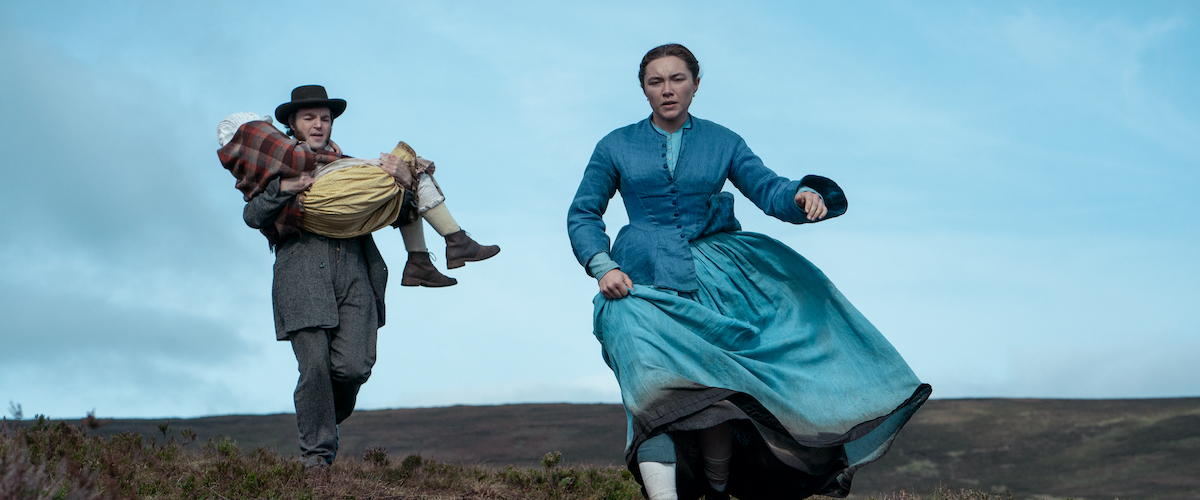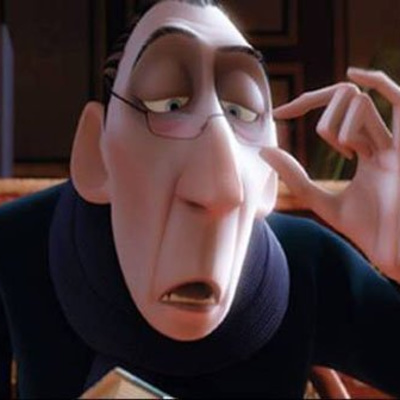By Rahul Desai
The Wonder is a beguiling horror movie disguised as a period drama, set in the post-famine Ireland of 1862. There’s a remote village on the outskirts of Dublin. There’s a bleak cottage in the middle of nowhere. There are hollowed bodies parading as people. There’s an 11-year-old ‘miracle girl’ who has apparently not eaten for four months. There are tourists and pilgrims who visit the village to catch a glimpse of this girl, Anna (Kila Lord Cassidy). And there’s an English nurse – Lib (a wonderful Florence Pugh) – who has been summoned to verify the authenticity of this seemingly divine girl. Lib’s job is to watch over Anna in the cottage, rotate 8-hour shifts with the second watcher, a nun, and report her findings to an all-male committee at the end of her stay. Lib befriends a cynical journalist, Will (Tom Burke), an ex-local who is convinced that Anna is a hoax to put the village on the map.
Chilean director Sebastian Lelio – whose work includes the Oscar-winning A Fantastic Woman (2017) – is meticulous in his composition of atmosphere and tone during his adaptation of Emma Donoghue’s novel. The village appears to be a space where the stench of death still floats; you can almost smell the delusions floating through the thick air. Different kinds of hunger – for sanity, for salvation, for peace, for love – are entrenched in most sequences. It often looks like Lib, a woman of science, is trapped in a giant Church, a shrine to spirituality. The background score is an ethereal riff on singing angels. There are multiple shots of Lib eating her breakfast every morning, almost in defiance of the ‘event’ she is hired to investigate. Anna’s family sounds possessed, like biblical characters gone rogue in pursuit of an outsider to sacrifice. Lib always seems a heartbeat – or wrong turn – away from being abducted and burnt at a stake.
But the wonder of The Wonder lies not in its mystery or physical identity. The film opens on a modern soundstage. The camera pans across the floor full of film-making equipment, wires, generators and half-built production sets. A woman’s voice remarks that we are nothing without stories, inviting viewers to “believe in this story, just like its characters do”. The camera settles on the period set of the inside of a rickety ship, where we notice the English nurse on her way to Ireland. Just like that, we are sucked into the 1860s. Now we know that everything we are seeing is an illusion, a ‘fake,’ yet there is no evidence of it – everyone in the film looks and sounds truthful, authentic, real. The film ends with a similar fourth-wall-breaking shot on the soundstage. Just like that, we are sucked out of the 1860s. What this clunky visual device does is reveal The Wonder as a moody meditation on the omniscience of storytelling. The anti-blurring of lines between fact and fiction ties into the conflict and conceit of the narrative.
Mythology is a medium that allows humans to make sense of the chaos around them. Religion is nothing but a story we tell ourselves to legitimize the significance of living. The Ireland of this film exists in the aftermath of the Great Famine, a man-made tragedy so numbing that much of the nation has resorted to looking upward for answers. Prayer has become a crutch to embrace the vagaries of loss. The village is biased towards the divine tale of Anna because the real world – shaped by the sanity of civilization – has given them grief. By acknowledging a child who is fasting by choice – someone who doesn’t need food after a famine – they are reclaiming faith from the jaws of fate. They choose to believe in a miracle because rationality has let them down. Their vibe is not too different from the older folk in M. Night Shyamalan’s The Village, who, driven by the collective trauma of history, construct a myth to protect themselves from the cruelty of realism. Anna’s family are both heroes and victims of their own faith. In a way, Lib can virtually see the camera panning from the fact-based confines of their soundstage to the fiction they have created for themselves within it. She can see where life ends and storytelling begins. The transition is not seamless.
One would imagine that nurse Lib and journalist Will represent the other offshoot of grief. Lib’s reaction to the trauma of losing a child is to pursue the surety of science rather than the insurance of spirituality. Her faith has been broken not by famine but by war. Will, whose family in the village perished from hunger, has taken to reporting – and questioning – stories instead of taking refuge in them. Both of them reside in London, the place whose political machinations triggered the Irish famine. But the final act of the film – where Lib and Will must confront their own relationships with faith – suggests that their grief, too, is sculpted by the grammar of storytelling. They may not be Bible nuts, but fleeting moments of their own irrationality are laced into the narrative. We see Lib pricking her fingers and tasting her own blood at night, a way of bringing herself closer to the baby she lost. We see Will barely acknowledge his past while chasing someone else’s. His denial is a form of religion, too – a story he tells himself to forget the truth and bury his memories.
The two sane people are missing big pieces of themselves, and Anna’s role in completing them – and turning them into a sailing ship on a soundstage – defines the narrative nature of closure. Catharsis, in its purest form, is rooted in the biblical act of resurrection. As a result, they aren’t characters that believe in the sanctity of stories so much as stories struggling to believe in the humanity of their own character. Perhaps it’s only fitting that they occupy a film whose title implies awe and reflection at once. After all, wondering about faith is the act of endorsing the wonders of liberation.





